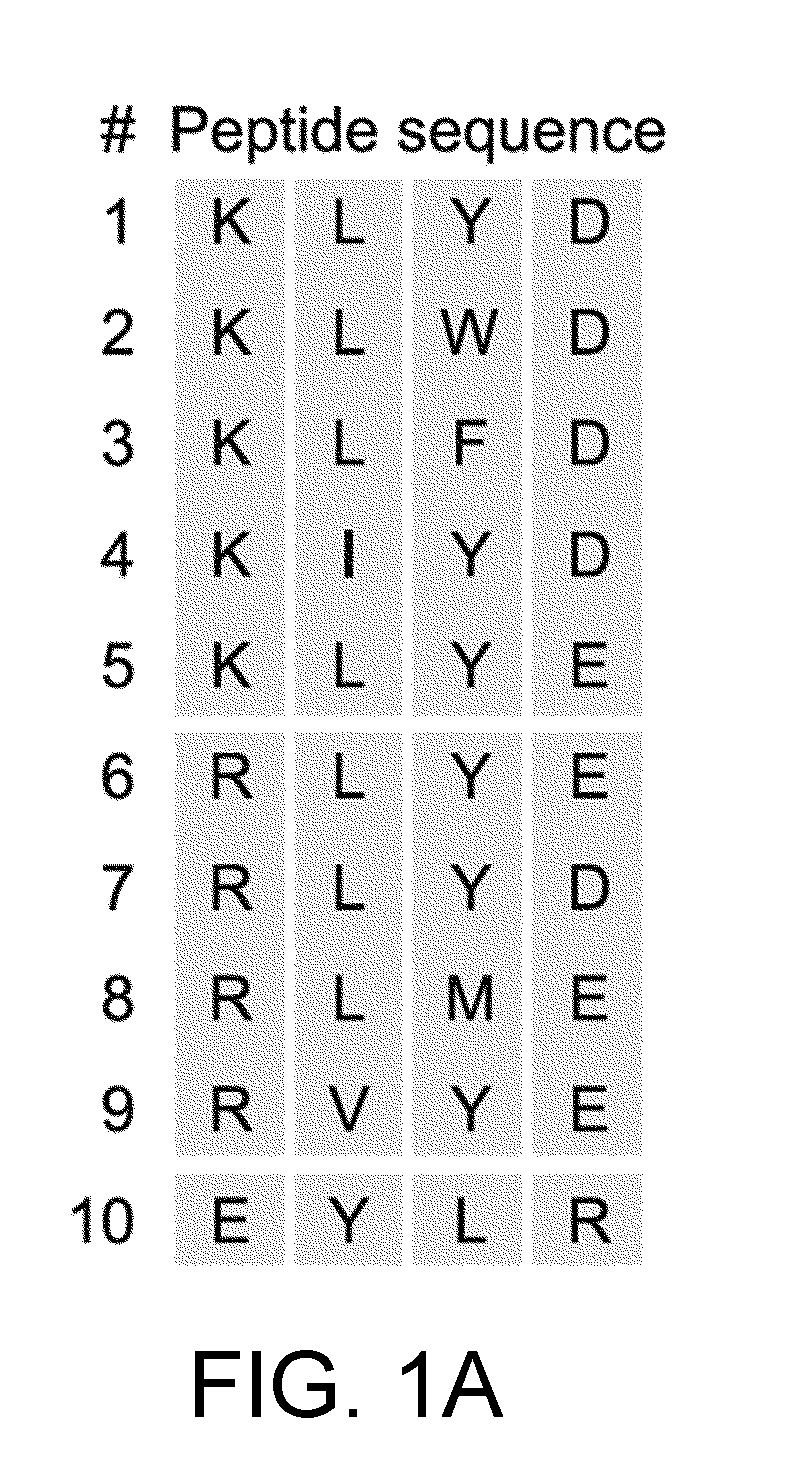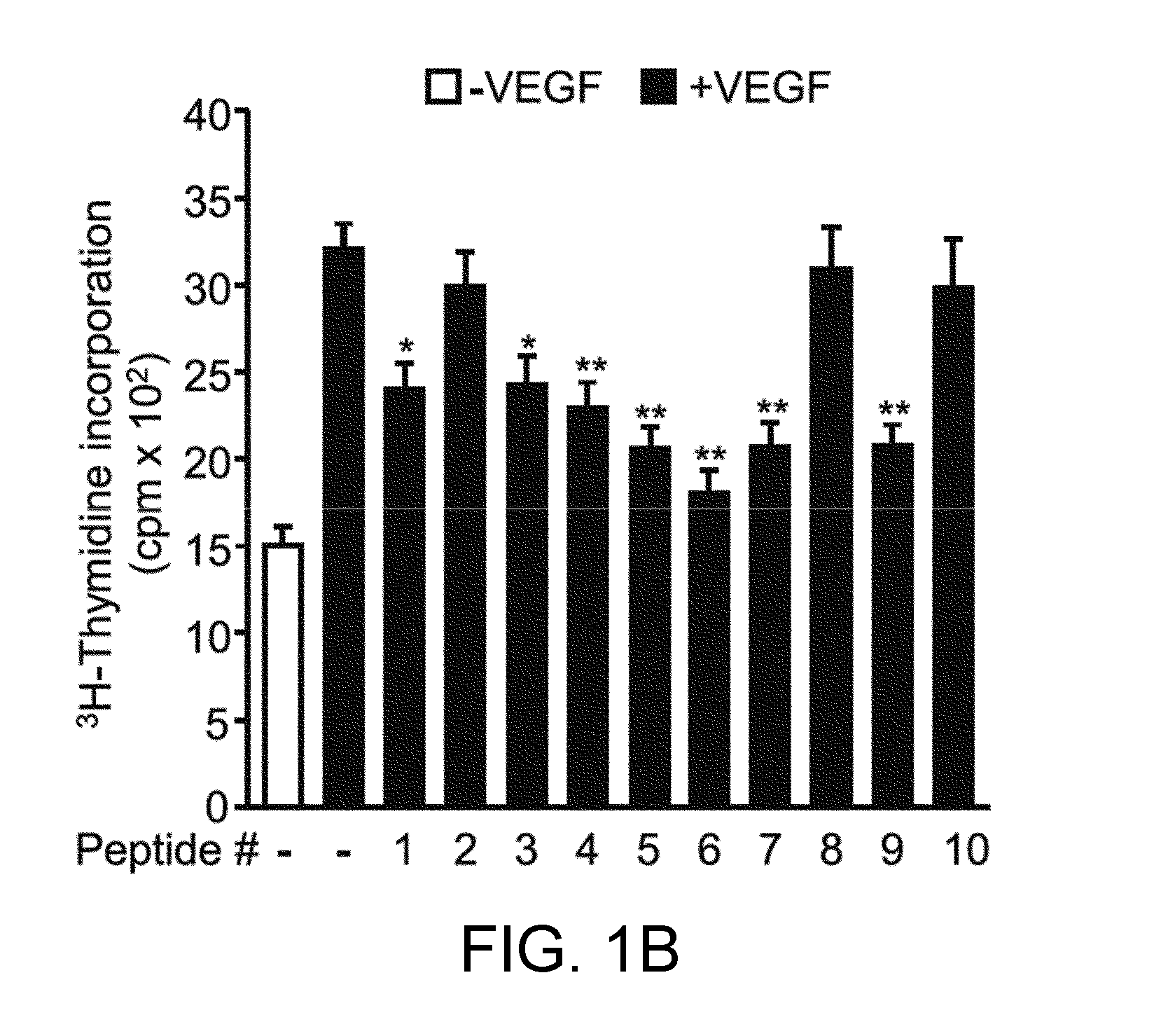Tetrapeptide having effect of inhibiting VEGF-induced angiogenesis and use thereof
- Summary
- Abstract
- Description
- Claims
- Application Information
AI Technical Summary
Benefits of technology
Problems solved by technology
Method used
Image
Examples
Embodiment Construction
[0076]Hereinafter, the present invention will be described in further detail with reference to examples. The examples will be provided to describe the present invention, and it should not be interpreted that the scope of the present invention is limited by the following examples.
[0077]
[0078]1. Experimental Procedures
[0079]1-1. Cell Culture
[0080]Human umbilical vein endothelial cells (HUVECs) were cultured in M199 medium, and during experiments, the cells were always used at passages 2 to 7. Meanwhile, mouse melanoma cells (B16F1 and B 16F10) and human colorectal tumor cells (HCT116) were cultured in RPMI media supplemented with 10% FBS, 1 mM sodium pyruvate, 10 mM 4-(2-hydroxyethyl)-1-piperazineethanesulfonic acid and 100 U / ml penicillin-streptomycin, and human multiple myeloma cells (IM-9 and RPMI 8226) were cultured in RPMI-1640 media. All of the cells were cultured at 37° C. with 5% CO2 in a humidified incubator.
[0081]1-2. Experimental Animals
[0082]A 7-week-old male mouse C57BL / 6...
PUM
 Login to View More
Login to View More Abstract
Description
Claims
Application Information
 Login to View More
Login to View More - R&D
- Intellectual Property
- Life Sciences
- Materials
- Tech Scout
- Unparalleled Data Quality
- Higher Quality Content
- 60% Fewer Hallucinations
Browse by: Latest US Patents, China's latest patents, Technical Efficacy Thesaurus, Application Domain, Technology Topic, Popular Technical Reports.
© 2025 PatSnap. All rights reserved.Legal|Privacy policy|Modern Slavery Act Transparency Statement|Sitemap|About US| Contact US: help@patsnap.com



